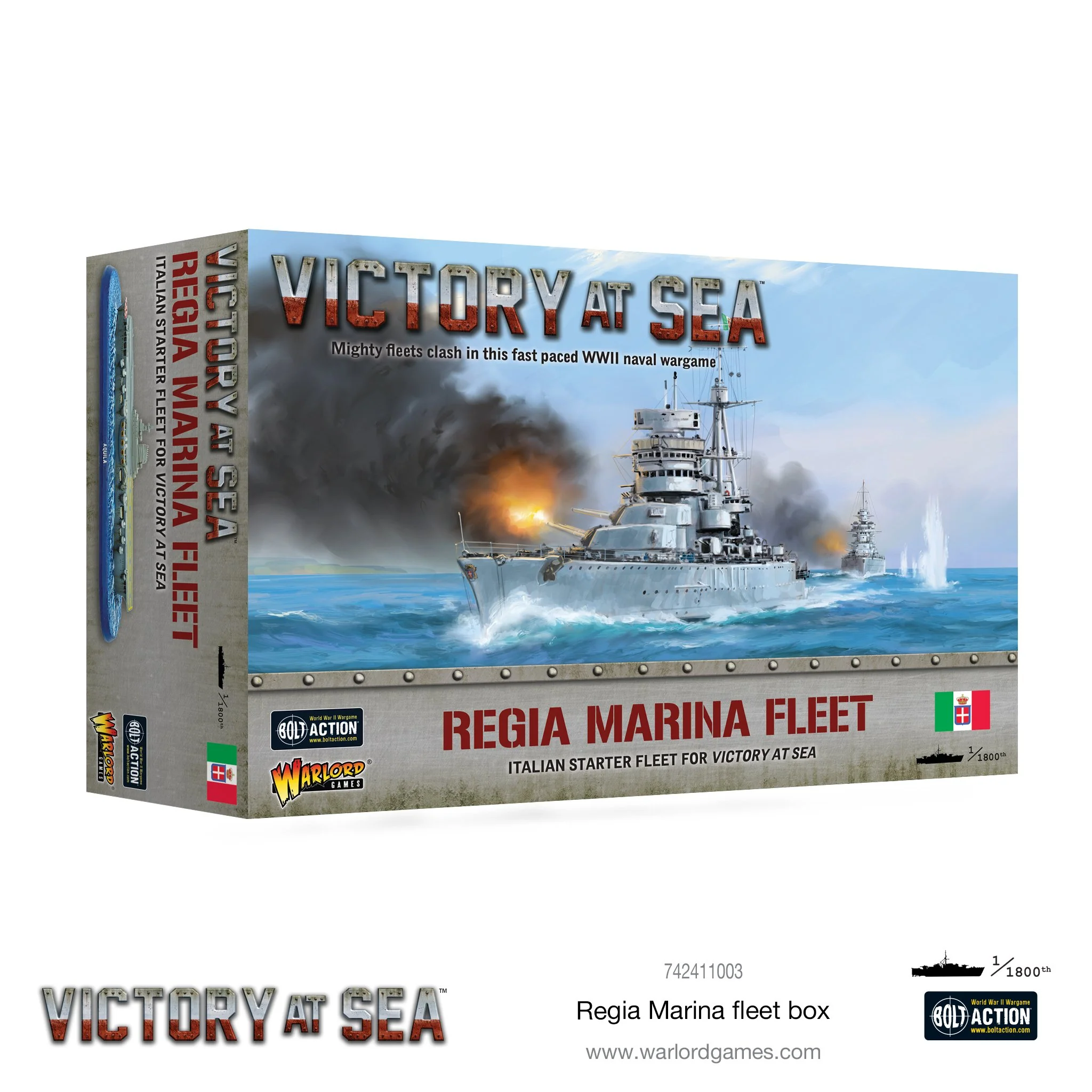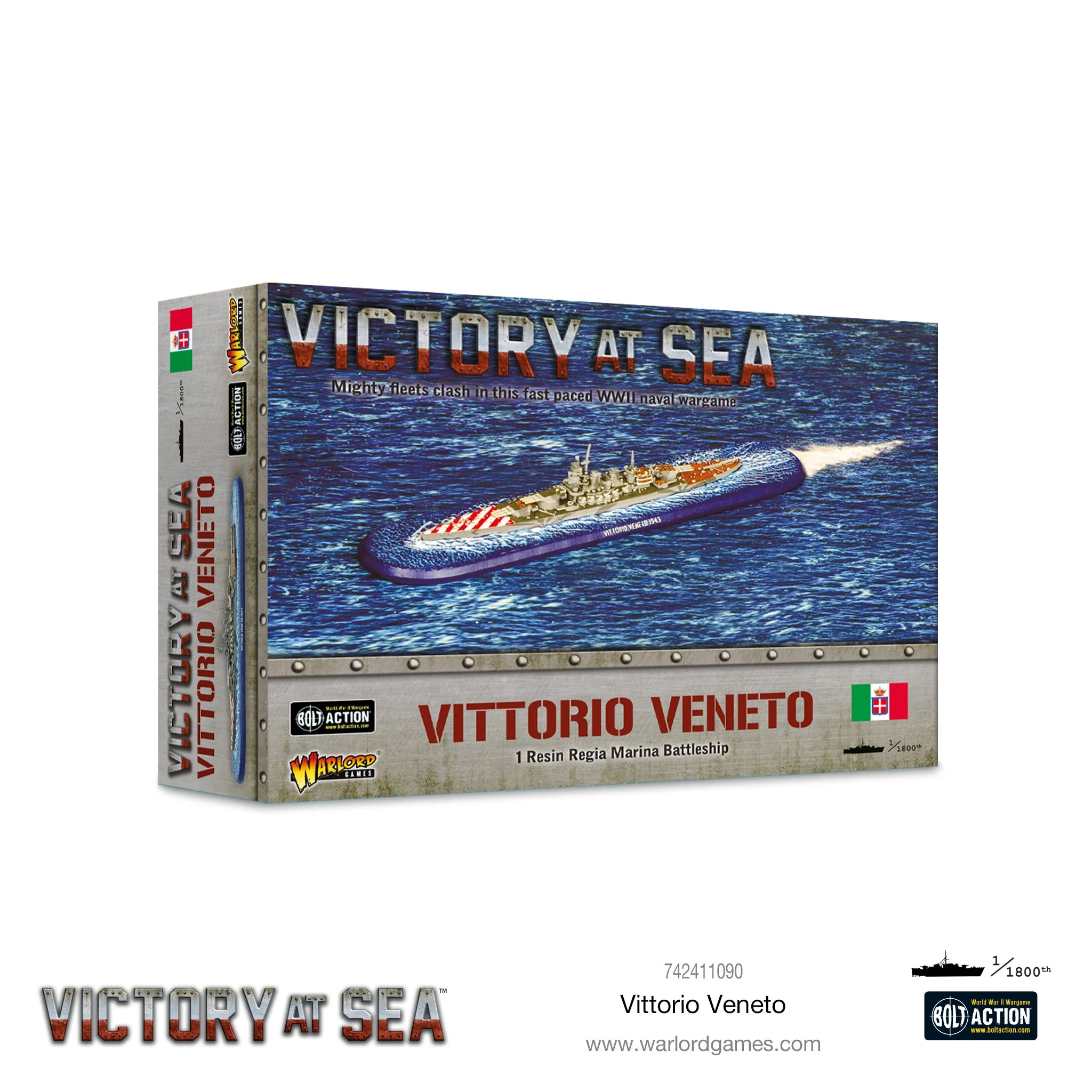- Trading Card Games
- Brett-, Karten- und Gesellschaftsspiele
- Würfel
- Pen&Paper
- Basteln, Malen und Transport
- Merchandise
-
Tabletops
- A song of Ice & Fire
- andere GW-Systeme
- Blood Bowl
- Bolt Action
- Conquest: Last Argument of Kings
- Freebooters Fate
- Legions Imperialis
- Marvel Crisis Protocol
- Middle Earth™
- Spielzubehör
- Star Wars Armada
- Star Wars Legion
- Star Wars Shatterpoint
- Star Wars X-Wing
- The Horus Heresy
- Victory At Sea
- Warcry
- Warhammer 40k
- Warhammer: The Old World
- Warhammer Age of Sigmar
- Vorbestellungen
Filter
–
1 verfügbar
Regia Marina fleet box
At the time of Italy’s entry into World War Two, she possessed a modern and – on paper at least – highly effective fleet. Four battleships and eight heavy cruisers were available, with three more battleships being fitted out. However, there were no aircraft carriers (initially), not least because the Regia Marina was intended to operate near to friendly air bases in Italy and Africa.As might be expected from a force operating among the islands of the Mediterranean, light forces were quite numerous, including 14 light cruisers, 128 destroyers and 62 motor torpedo boats, which was a weapon favoured by the Italians and well suited to local conditions. No less than 115 submarines were available. The main Italian naval base was at Taranto, home of the battleship force. Lighter groups were based out of ports on the Italian mainland, Sicily and the Red Sea.The Regia Marina was primarily tasked with interrupting British logistics and trade through the Mediterranean, and with keeping the Axis nations’ links to North Africa open. Major actions with the Royal Navy were not desirable nor really necessary for this mission to be carried out.Contents:Aquila-class Carrier - AquilaConte di Cavour-class Battleship – Conte di Cavour 1940Etna-class cruiser – Etna 1942Zara-class cruiser – Pola 1940Luigi Cadorna-class cruiser – Luigi Cadorna 1940Navigatori-class Destroyer x3Torpedo-Bomber Aircraft – Reggiane RE.2001 Falco II x4 flightsShip Cards and Damage SlidersAssembly InstructionsModels supplied unassembled and unpainted
112,00 €*
1 verfügbar
Regia Marina Submarines & MTB sections
Submarines: Compared to a German Type VII C submarine, the Marcello-class were much larger, displacing 1,060 tons versus 769. Speed and range between the two classes were almost similar, but the Marcello-class had more torpedo tubes than the famous U-Boat. The Marcello-class should be considered one of the most successful produced by the Italian shipyards and showed very good qualities – being fast, structurally robust and relatively manoeuvrable.MTBs: Capable of 45 knots, the Italian Motoscafo Armato Silurante (Armed Torpedo Boat) or MAS Boats were extremely active in the Mediterranean theatre. Though they were not well suited to rougher seas, they still achieved a great deal of note, including the torpedoing of HMS Capetown and an attack on the harbour of Malta, though the latter was a failure that cost two MAS Boats.Based on German S1 class S-Boats the Italians found in the port of Cattaro in Yugoslavia, the MS Boat was larger and far more seaworthy than the MAS designs. Though not as fast, it was far better suited to long range patrols in the Mediterranean being more stable and more comfortable. It was an MS Boat that sank the largest vessel of any MTB in the war, HMS Manchester, in 1942.Box contains:Marcello-class Submarines x 3MAS MTB sections x 2MS MTB sections x2Ship CardsModels supplied unassembled and unpainted
35,00 €*
1 verfügbar
Vittorio Veneto
The Littorio class was the first new Italian battleship class for nearly a decade when design work began in 1930. Initially designed to remain within the 35,000-ton Washington Treaty limit, the final displacement was just over 40,000 tons. As well as being good-looking ships, the Littorio-class included a number of new features including high-velocity guns. They were probably the first of the ‘fast battleships’ that would come to dominate capital ship design in the late 1930s and onward.Vittorio Veneto saw extensive service in World War Two, participating in the Battles of Cape Spartivento in November 1940 and Cape Matapan in March 1941. Though struck by a torpedo at this latter engagement and again later courtesy of a British submarine, she would escape unscathed from the British raid on Taranto of November 1940. 1941 and early 1942 was spent attempting to attack British convoys en route to Malta, until fuel shortages forced the end of such activity. In the armistice of 1943, she was surrendered to the Allies after Italy withdrew from the war, spending the next three years under British control in Egypt. Thereafter she was allocated to Britain as a war prize and was scrapped.Models supplied unassembled and unpainted
21,00 €*



